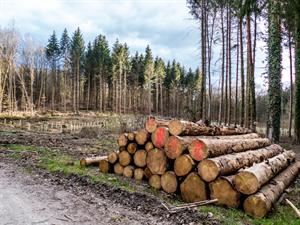PDF chapter test TRY NOW
The Structure of the Indian Economy

Like all countries around the world, the Indian economy also began with agriculture as its main occupation, which made the foreigners name India as an “Agrarian Economy” as around 60% of the country’s population is dependent on agriculture.
The economic structure of India clearly defines the sectors which form the basis of the Indian Economy; they are given below.
1. Primary Sector:

Fishing – Primary Sector
The Primary Sector is mainly concerned with the production and supply of basic goods like food etc. This sector forms the base of the economy as the highest percentage of the people are engaged in this sector.
Agriculture forms the core of this sector, as Agri is mostly performed around the village areas it comes under the category of Primary sector.
Mahatma Gandhiji: Gandhi, during his famous speech in India, mentioned that “Villages are the backbone of the economy”.
The Urban spaces don’t support the environment for performing Agriculture as the land, and water etc., are not easily available as in the villages.
Every crop is cultivated and transported from villages to the markets present in the cities to meet the needs of the people living in cities.
Some of the other industries which fall under the primary sector are:
1. Fishing
2. Mining
3. Cattle rearing
4. Honey and Resin gathering
2. Secondary Sector:
- The industries located in the cities form the core of this sector ,which are established to produce finished goods obtained from the Primary sector (Villages).
- The processing methods are unknown to the people working in the Primary sector as they work along with nature.

Lumbering Industry – Secondary Sector
- The Secondary sector requires a skilled workforce specialising in operating machines in the Industries.
- Most of the industries are confined in Urban areas as the industrial workforce is not available in villages.
Tamil Nadu: According to the census report, about 47% of Tamil Nadu’s population lives in urban cities.
Industries preferably are located in areas near to their raw materials which make their production process much easier.
Some of the raw material based industries are:
Agro-based industries – Cotton, Vegetables, Fruits.
Agro-based industries – Cotton, Vegetables, Fruits.
Forest-based industries – Rubber, Honey processing, Papermaking, Wood (Furniture).
Mineral-based industries – Iron and Steel, Coal, Petroleum.
Marine based industries – Seafood, Marine plants, Shells.
3. Tertiary Sector

IT company – Tertiary Sector
The Tertiary sector, also known as the Service sector, provides all kinds of services to the country's common people. This sector is attached to the daily lives of people.
Service Sector: Currently, the service sector is the highest contributing sector to the Indian Economy.
The below-listed occupations belong to the service sector.
- Transport – Roadways, Railways, Airways and Waterways.
- Trade – Ports and Harbours, Markets, Shops.
- Banking- Money Deposit and Withdrawal, Exchange of money.
